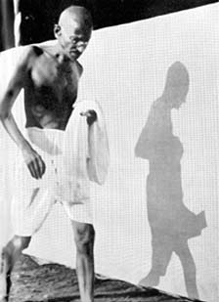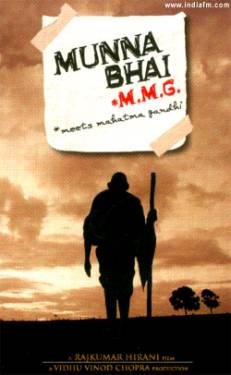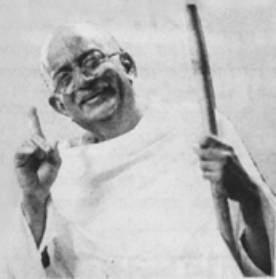General
| Let us do Gandhigiri! | |||||||||||||
| Mr.
Kallol Das Asst. Prof. (MBA) |
|
||||||||||||
Mr. Sundeep Kiklawala |
|
||||||||||||
|
This
is one newly coined term that has taken the nation by storm. Pick up
any newspaper, magazine or TV Channel and you will find some remark
or some discussion on this term. But first, what is Gandhigiri? To
answer this question, we visited Wikipedia, an open-source Online
Encyclopedia to check what it has to say about Gandhigiri. Etymology
(Meaning the study of the origin of the words)
Gandhigiri
is a fusion of the words Gandhi and Giri; and may be
loosely translated as practising what Mahatma Gandhi preached
in informal Bambaiya Hindi. The word "Giri" is a
colloquial suffix. X-giri means one action or the set of all actions
characteristic of X. Thus, "Dadagiri" means "the
actions characteristic of a dada (= bully)", "chamchagiri"
means the actions characteristic of a chamcha (=sycophant). Meaning
Gandhigiri
denotes modifying one's principles and lifestyle reflecting the
moral principles of Satya (the Truth), Ahimsa (passive
non-violence), Sahishnuta (Tolerance) and Ekta (Unity) as practised
in real life by Mahatma Gandhi. People adopting Ganghigiri solve
problems with perseverance, non-violence and tolerance rather than
with violence. Gandhigiri aims to overcome 'Dadagiri' or 'bullyism'
by encouraging people to adopt non-violent and constructive ways to
solve a problem. Use
in popular culture
The
2006 Bollywood movie Lage Raho Munna Bhai popularised
Gandhism under the new term of Gandhigiri. According to The
Washington Post, some critics and sociologists have suggested
that this phenomena could be attributed to the film simplifying
Gandhi's "lofty ideals" and conveying them in
contemporary, conversational language. The
Craze for Gandhi Vidhu Vinod Chopra, the producer of Lage Raho Munnabhai has been stunned by the overwhelming response to his movie. In fact, the movie has revived people’s interest in all other movies on Gandhi including Gandhi by Richard Attenborough, The Making of the Mahatma by Shyam Benegal and others. In fact, even the sales of books on Gandhi have shot up with the autobiography of Gandhi selling like hot cakes.
After
receiving a request for a copy of Gandhi's autobiography, My
Experiments with Truth from an inmate at the Arthur Road Prison, the
Mumbai Sarvodaya Mandal will be distributing free copies of the text
and will be showing Lage Raho Munna Bhai at various jails throughout
the country. Gandhigiri
protests According
to the 12 October 2006 edition of bbc.co.uk, the film inspired a
"Gandhi-style protest by farmers" in the Vidarbha region.
Many other examples of Gandhigiri protests have also been reported.
People who organized a protest in Lucknow claimed to have been
inspired by Lage Raho Munna Bhai to use roses to convey their
message. Medical students in Lucknow claimed to have been inspired
by Lage Raho Munna Bhai to do volunteer work, planting trees
"to conserve nature which is bound to benefit public
health." Mafia don Babloo Srivastava claimed to have been
inspired by Lago Raho Munna Bhai to distribute roses as a
"message of love and peace". Gandhigiri
Resources There is already a website called www.gandhigiri.co.in and www.gandhigiri.org set up after the success of the movie. Plus, a plethora of websites dedicated to Mahatma Gandhi like www.mkgandhi.org, www.web.mahatma.org.in, www.gandhiserve.org, www.gandhitoday.org, www.gandhiana.org, www.nonviolenceworks.com, www.mahatma.com, www.gandhiorg.org, etc are getting a sudden rush of visitors.
To
Sum Up To end this article, we just want to say one thing: Let us do Gandhigiri. After all, if Munnabhai can do it, so Why can't We ???? |
|||||||||||||





